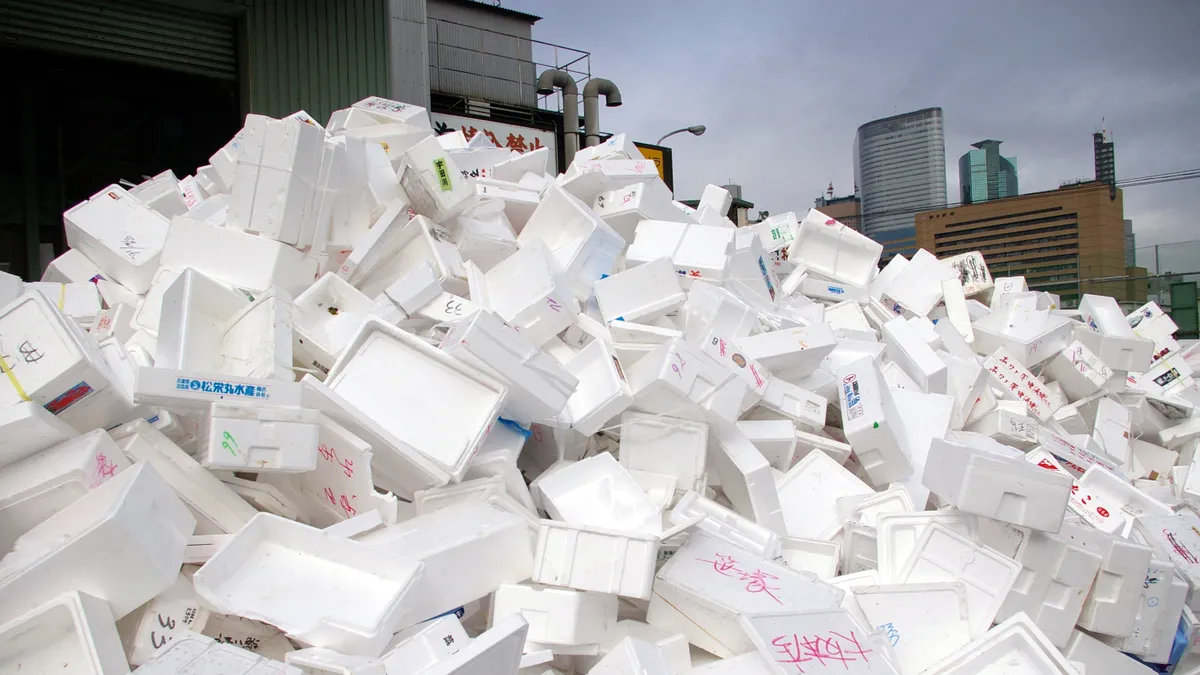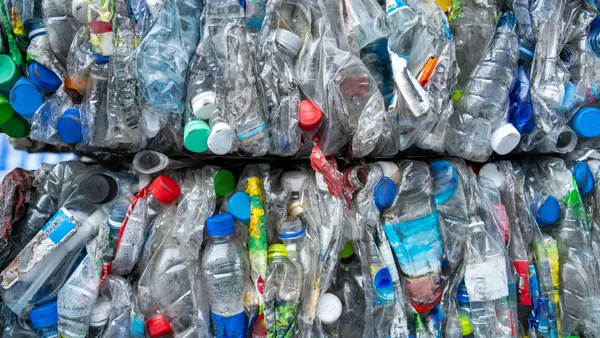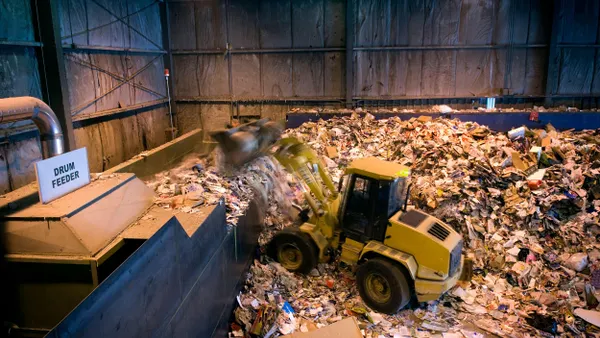Dive Brief:
- A recent recycling survey from the EPS Industry Alliance says 168.6 million pounds of expanded polystyrene foam transport and protective packaging was diverted from disposal in North America in 2022, up from more than 136.8 million pounds in 2019.
- The association says the survey shows that EPS recycling is particularly successful in “business-to-business systems” and “alternative channels” such as store drop-offs, rather than in more well-known curbside programs, where such material is often not accepted.
- The survey, conducted by Resource Recycling Systems on behalf of EPS-IA, shows 61 million pounds of the material came from postconsumer sources, which the association says equates to a 31% recycling rate in North America.
Dive Insight:
Industry groups have been working to raise awareness of EPS recycling systems and prove their effectiveness in the wake of numerous state policies to ban or limit certain uses of the material in categories such as food service ware. EPS-IA, which represents the sector that makes transport and protective packaging from the material, feels its efforts should be viewed as a success story in this broader discussion.
Betsy Bowers, executive director of EPS-IA, said the latest survey illustrates how EPS is primarily recycled “behind the scenes” through independent contracts, meaning “many people don’t realize how much is actually being recycled,” she said in a statement. “The fact that we’re diverting such a significant amount of material from landfills shows the real impact of these channels, which aren’t as visible to the public as curbside recycling.”
EPS recyclers say recent innovations in foam recycling technology, paired with grant programs, have helped provide more places for people to recycle the material. EPS’s lightweight and sometimes bulky nature also contributes to the perception of poor economics for collection and recycling.
EPS-IA highlighted Foam Recycling Coalition grants, which help fund projects such as building and installing foam densifiers and other technology. Between 2019 and 2023, FRC-supported programs collected almost double the amount of foam polystyrene for recycling, rising from 841,000 to 1.6 million pounds, according to a news release.
EPS-IA also maintains an interactive map meant to help locate EPS recyclers, which the organization says lists more than 400 drop-off locations, with 60 of those locations opening in the last year.
The EPS industry says it has invested about $185 million in technologies that incorporate postconsumer recycled EPS foam into new resin. EPS-IA estimates an available capacity of about 79 million pounds in North America, with an additional 150 million pounds planned, according to a news release.
Demand for recycled content is also increasing, Bowers said. Such material is used for rigid polystyrene applications like packaging, safety helmets, automotive applications and building and construction materials, according to the report.
While the material covered in the EPS-IA report falls under a different category than food service foam applications, Plastics News recently reported that certain advocacy groups are not impressed with the recycling rates for transport packaging either and view the categories as part of a related discussion.
Food service foam has faced criticism from environmental groups that say it’s not widely recyclable, has low recycling rates, and contributes to pollution, particularly along waterways.
The broader polystyrene recycling sector has also faced its share of high-profile challenges in recent years. Regenyx —a polystyrene chemical recycling joint venture between Agilyx and Amsty, which had the ability to accept EPS and other categories — shut down earlier this year. The company said the closure was the result of “successfully achieving” its recycling objectives, but Sustainable Plastics reported that the company faced millions of dollars in losses.
Environmental group Beyond Plastics has criticized past polystyrene recycling efforts, particularly those that involve chemical recycling, which the organization says cause other environmental problems.
Polystyrene foam products, often referred to under the umbrella of EPS by state and federal officials, has also faced numerous bans and restrictions over the years as more lawmakers take aim at single-use plastic products.
Eleven states have some form of foam ban, according to U.S. PIRG. At the federal level, bills such as the Farewell to Foam Act aim to ban certain uses of the material in categories such as food service, packing peanuts and coolers. Some parts of the packaging sector are also transitioning away from using EPS as transport or protective packaging.
Extended producer responsibility programs in the U.S. will likely add new complexity to polystyrene foam recycling systems. In 2023, Oregon banned food vendors from serving food in containers made from the material. However, the state’s anticipated EPR for packaging program will soon require producer responsibility organizations to provide separate recycling services for blocks of EPS foam along with some other kinds of materials like HDPE pails and PE film.
Meanwhile, under the rules of California’s EPR for packaging program, producers of expanded polystyrene service ware such as cups and takeout containers have until Jan. 1 to prove the items have at least a 25% recycling rate in the state. That threshold increases periodically through 2032, when the rate must hit 65%. Otherwise, they will not be allowed to sell the items in the state.
Editor’s note: This has been updated to further clarify the distinction between uses of polystyrene foam in transport packaging and other categories, such as food service.
This story first appeared in the Waste Dive: Recycling newsletter. Sign up for the weekly emails here.











